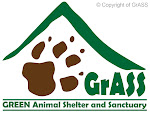Tuesday May 26, 2009
Stories by LIM AI LEE
Once the world's biggest garbage dump, the Fresh Kills landfill in New York City is being turned into a green lung.
IT was once the world's biggest landfill, with refuse piling 25m higher than the Statue of Liberty across the channel.
Covering 12sq km, the Fresh Kills landfill in Staten Island – one of New York's five boroughs – was an environmental nightmare, receiving 29,000 tonnes of garbage daily from the entire city at its peak.
 NYC Parks commissioner Adrian Benepe.
NYC Parks commissioner Adrian Benepe. But all that is changing. The ugly and smelly duckling is being given a swan makeover.
Under an ambitious greening project to be implemented over three decades, the 890ha site will be transformed into a world-class city park and an eco-tourism attraction, according to New York City Parks commissioner Adrian Benepe.
When fully completed, Fresh Kills Park will be three times the size of Manhattan's Central Park.
"There will be reclaimed wetlands, recreational facilities and landscaped public parkland. The site is large enough to support many sports and programmes, including nature trails, horseback riding, mountain biking, community events, outdoor dining, sports fields and canoeing," said Benepe who oversees over 2,000 parks in NYC.
Current work includes the creation of 24ha of parkland, the first sections of which are expected to open early next year.
The Fresh Kills landfill, which covers 8% of Staten Island's land area, began receiving waste in 1948. It has been described as the largest man-made structure on Earth, with volume exceeding even that of the Great Wall of China.
In March 2001, the landfill was closed following local pressure with support of the United States Environmental Protection Agency (EPA). However, after the Sept 11, 2001, attacks on New York's World Trade Centre, the landfill was temporarily reopened to receive and process much of the debris from the destruction.
It is anticipated that it will take a minimum of 30 years before garbage decomposition is complete, associated gas production and settlement cease, and leachate fully drains from the site.
Benepe is confident that Fresh Kills Park would support rich diverse habitats for wildlife, birds and plants.
Last year, over 200 species of birds, mammals, reptiles and amphibians were sighted, including the red-tailed hawk, northern snapping turtle, turkey vulture, killdeer, ring-necked pheasant, red-winged blackbird, tree swallow, glossy ibis, great blue heron, egret, Canada goose, muskrat, white-tailed deer and cotton-tailed rabbit.
The public will be able to track the progress of tree growth and stroll past 2.8ha of Founder Seed plots operated by the Department of Parks and Recreation's Greenbelt Native Plant Center.
Harvest from both projects will be used in replanting Fresh Kills Park.
Development over the next several years would focus on providing public access to the interior of the site, Benepe said during a press tour of Staten Island's parks.
He added that development of the park had taken into account environmental safety and sustainability.
"No area will be open to ongoing public access until it has been tested and found safe for park use," Benepe stressed.
While nearly 45% of the site was once used for landfill operations, the remainder is currently composed of wetlands, open waterways, and unfilled lowland areas.
 From garbage dump to greenery: An artist impression of Freshkills Park, which will be three times the size of Manhattan's Central Park.
From garbage dump to greenery: An artist impression of Freshkills Park, which will be three times the size of Manhattan's Central Park. The tops of the landfill mounds now offer spectacular vistas of the expansive site, as well as views of downtown Manhattan.
Two of the four mounds at Fresh Kills are already capped with a thick, impermeable cover that separates the wastes from the public. The remaining two mounds are in the process of being capped.
The city's Department of Sanitation is now working with the New York Department of Environmental Conservation (DEC) to ensure the environmentally-sound closure of the landfill sections that remain to be capped and to prepare for on-site environmental monitoring and control systems.
Since the landfill closed eight years ago, the city's wastes have been transported to landfills in Pennsylvania and Ohio by trucks.
At the former landfill site, the Department of Sanitation is already actively harvesting methane from the decomposing waste buried at Fresh Kills.
This methane is sold to the utility, National Grid, to heat about 22,000 homes on Staten Island and generates about US$11mil (RM39.6mil) in annual revenue for the city.
The park's Draft Master Plan focuses on executing a carefully planned first phase of development that will initiate active use of the park, generate enthusiasm and commitment on the part of stakeholders, and propel later phases of development.
To assure that the park's long–range construction does not become a waiting period, but is a time of dynamic change, each project is independent of the others and is capable of being developed concurrently or in sequence.
Phase I will occur over the first 10 years of the park's development, with projects and facilities opening throughout this period.
Meanwhile, the Parks Department has begun working with local elementary schools to develop lesson plans based on the Fresh Kills Park site and its related issues. Among the lessons integrated with study of the site are ecology, wildlife, environment and remediation, geological history, landfill engineering, waste reduction and recycling.
Related Stories:Call of the island
Five parks in one
This article was taken from: The Star Online: Lifestyle: Living 26 May 2009











































2 comments:
What a great turn around story! I especially like how they are turning it into a learning opportunity for students. Hope this happens all over the United States!
Henry
As a home owner you can receive a 30% tax credit on any Geothermal Heat Pump that meets or exceeds Energy Star requirements. All Egg Geothermal Heat pumps Qualify for this tremendous tax Credit.
The tax credit applies to all the costs you incur when Egg Systems installs your new high efficiency Geothermal Heating and Cooling System(s).
You can file for the credit by completing the Renewable Energy Credits subsection on your tax return forms. If you are subject to the Alternative Minimum Tax, you can claim the credit on your taxes for the following year. No proof of purchase will be required; however, in case of an audit, you are encouraged to keep a detailed invoice of your investment on file. After your new Egg Geothermal Heating and Cooling System is installed we will indicate that it is a "Geothermal Heat Pump" on the invoice and note that it "Exceeds requirements of the Energy Star program currently in effect".
The tax credit is available through December 31, 2016. Consult your local tax professional for advice on taking advantage of the tax credit, as this announcement is not intended as a recommendation or endorsement of any financial strategy.
Helpful Resources
- See Federal Tax Credits for Energy Efficiency at Energy Star
- IRS form 5695 for 2008 Residential Energy Efficient Property Credit (note max credit amount limited to $2000 – no limit in 2009)
- More Information about the "Residential Renewable Energy Tax Credit"
- Find additional tax incentives that may be available in your state - Florida Home Owners Georgia Home Owners
Consult your tax professional for details.
*Form 5695 for the 2009 tax year not yet available.
Post a Comment